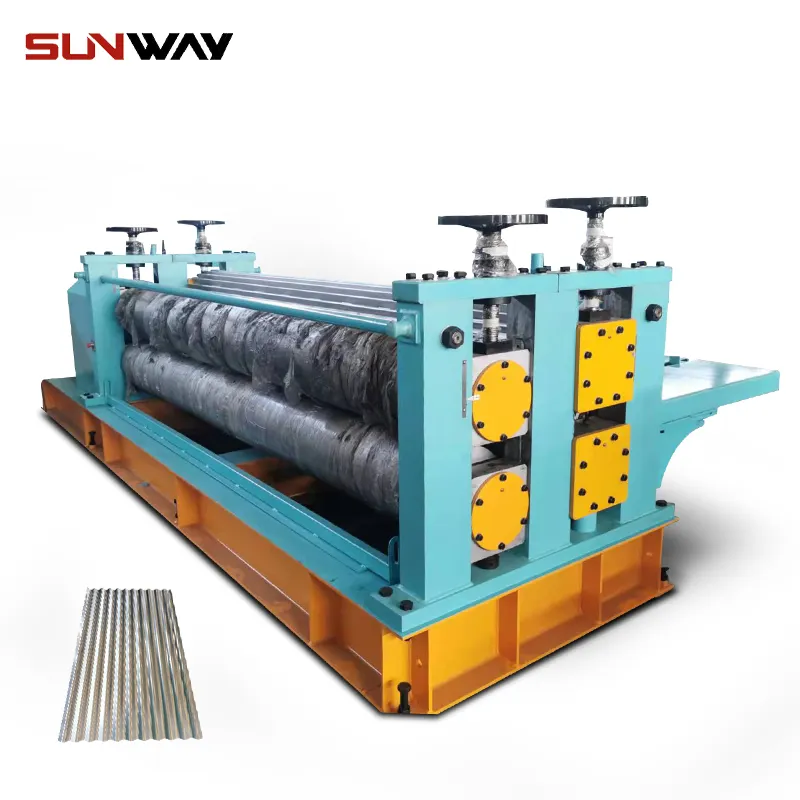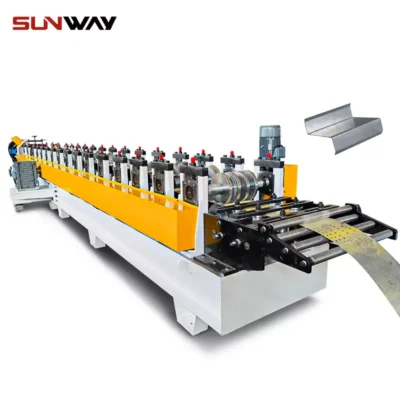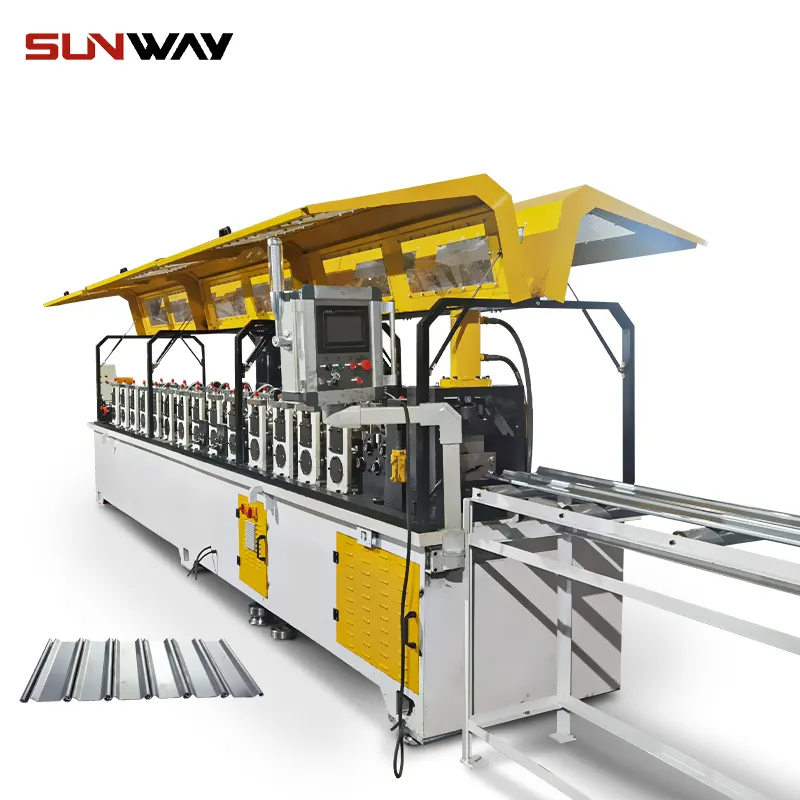Overview of Roll Forming Solutions
Roll forming solutions have revolutionized the manufacturing industry by enabling the efficient production of long metal strips with a consistent cross-section. From automotive parts to building materials, roll forming provides unparalleled precision and versatility. In this comprehensive guide, we will delve into the nuances of roll forming solutions, exploring their types, working processes, key components, and much more. Whether you are a seasoned professional or new to this technology, this guide will provide valuable insights and practical information.
Roll Forming Machine Guide
Roll forming machines are the heart of roll forming solutions. They come in various configurations, each designed to meet specific manufacturing needs. Let’s explore some of the key aspects of these machines.

Types of Roll Forming Solutions
Roll forming solutions can be categorized based on the metal powders they work with. Here’s a detailed table listing some specific metal powder models used in roll forming:
| Metal Powder Model | Description |
|---|---|
| Aluminum 6061 | High strength, lightweight, corrosion-resistant. |
| Steel 1018 | Low carbon steel, easy to form, and weld. |
| Stainless Steel 304 | Corrosion-resistant, high strength, widely used. |
| Copper C11000 | Excellent electrical conductivity, malleable. |
| Brass C36000 | Good machinability, corrosion-resistant. |
| Titanium Grade 5 | High strength, lightweight, corrosion-resistant. |
| Nickel 200 | Excellent corrosion resistance, good mechanical properties. |
| Zinc Zamak 3 | Good dimensional stability, high impact strength. |
| Magnesium AZ31B | Lightweight, good machinability, moderate strength. |
| Inconel 625 | High strength, corrosion-resistant, used in extreme environments. |
Working Process of Roll Forming Solutions
The roll forming process involves feeding a metal strip through a series of roller dies to achieve the desired cross-sectional shape. This process is highly efficient and capable of producing complex shapes with tight tolerances. Here’s a step-by-step overview:
- Material Feeding: The metal strip is fed into the roll forming machine.
- Roll Forming: The strip passes through multiple pairs of roller dies, each progressively shaping the metal.
- Cutting: The formed strip is cut to the required length.
- Final Processing: Additional processes like punching, notching, or welding may be performed.
Key Components and Their Functions
| Component | Function |
|---|---|
| Decoiler | Holds and feeds the metal strip into the machine. |
| Roller Dies | Shapes the metal strip through progressive bending. |
| Cut-off Press | Cuts the formed metal to the desired length. |
| Control System | Manages the machine operations and ensures precision. |
| Guides and Rollers | Maintain the alignment and correct positioning of the metal strip. |
-
 Highway Guardrail End Terminal Forming Machine
Highway Guardrail End Terminal Forming Machine -
 Highway U/C Post Roll Forming Machine
Highway U/C Post Roll Forming Machine -
 2 Waves Highway Guardrail Roll Forming Machine
2 Waves Highway Guardrail Roll Forming Machine -
 3 Waves Highway Guardrail Roll Forming Machine
3 Waves Highway Guardrail Roll Forming Machine -
 Vineyard Post Roll Forming Machine
Vineyard Post Roll Forming Machine -
 Auto Size Changeable Sigma Purlin Roll Forming Machine
Auto Size Changeable Sigma Purlin Roll Forming Machine -
 Auto Size Changeable C Z Purlin Roll Forming Machine
Auto Size Changeable C Z Purlin Roll Forming Machine -
 Auto Size Changeable Z Purlin Roll Forming Machine
Auto Size Changeable Z Purlin Roll Forming Machine -
 Auto Size Changeable C U Purlin Roll Forming Machine
Auto Size Changeable C U Purlin Roll Forming Machine
Machine Speed and Efficiency
| Machine Type | Speed (m/min) | Efficiency (%) |
|---|---|---|
| Standard Roll Forming | 15-30 | 85-90 |
| High-Speed Roll Forming | 50-100 | 90-95 |
| Heavy Duty Roll Forming | 10-20 | 80-85 |
Customized Mechanical Parameters
| Parameter | Description |
|---|---|
| Thickness Range | The thickness of the metal strip that can be processed. |
| Material Types | Types of metals that can be used (e.g., steel, aluminum, copper). |
| Profile Width | The maximum width of the profile that can be formed. |
| Forming Stations | Number of stations used in the roll forming process. |
| Cutting Length | The maximum length of the formed pieces. |
Applications of Roll Forming Solutions
Roll forming solutions are used in a wide range of industries. Here’s a table illustrating some common applications:
| Industry | Application |
|---|---|
| Automotive | Bumpers, chassis parts, door frames. |
| Construction | Roof panels, wall panels, gutters. |
| Furniture | Metal frames, shelving units, structural components. |
| Electrical | Cable trays, enclosures, conduit. |
| Aerospace | Structural components, support brackets, stiffeners. |
| Agriculture | Equipment frames, machinery components. |
| Energy | Solar panel frames, wind turbine components. |
Installation, Operation, and Maintenance
Proper installation, operation, and maintenance are crucial for the efficient functioning of roll forming machines. Here’s a detailed guide:
| Aspect | Details |
|---|---|
| Installation | Site preparation, machine alignment, power supply setup. |
| Operation | Machine setup, feeding material, monitoring process parameters. |
| Maintenance | Regular inspection, lubrication, replacement of worn parts. |
Suppliers and Price Range Details
Finding the right supplier is essential for acquiring quality roll forming machines. Here’s a table with some notable suppliers and their price ranges:
| Supplier | Price Range (USD) |
|---|---|
| Formtek Group | 50,000 – 200,000 |
| Samco Machinery | 60,000 – 250,000 |
| Gasparini Industries | 70,000 – 300,000 |
| Roll-Kraft | 80,000 – 280,000 |
| Metform International | 65,000 – 220,000 |
Choosing the Right Supplier
Choosing the right supplier involves considering several factors. Here’s a table to help you make an informed decision:
| Criteria | Details |
|---|---|
| Reputation | Look for reviews, testimonials, and industry recognition. |
| Customization Options | Ability to tailor machines to your specific needs. |
| Technical Support | Availability of after-sales support and technical assistance. |
| Cost | Compare prices and evaluate value for money. |
| Lead Time | Consider the time required for manufacturing and delivery. |
Advantages and Limitations of Roll Forming Solutions
Understanding the pros and cons of roll forming solutions is vital for making informed decisions. Here’s a comparison table:
| Aspect | Advantages | Limitations |
|---|---|---|
| Precision | High accuracy and consistency. | Requires initial setup time. |
| Efficiency | Fast production speeds. | High initial investment. |
| Versatility | Can form complex shapes. | Limited to certain material thicknesses. |
| Material Usage | Minimal waste. | May require secondary operations. |
| Customization | Highly customizable. | Requires skilled operators. |

FAQ
What is roll forming?
Roll forming is a continuous bending process in which a long strip of sheet metal is passed through sets of rolls to form desired shapes.
How does roll forming differ from other metal forming processes?
Roll forming is unique in its ability to produce complex cross-sections with high precision and minimal waste, unlike stamping or extrusion.
What materials can be roll formed?
Common materials include various steels, aluminum, copper, brass, titanium, and specialized alloys like Inconel.
What are the maintenance requirements for roll forming machines?
Regular inspection, lubrication, alignment checks, and replacement of worn components are essential for optimal performance.
Can roll forming machines be customized?
Yes, roll forming machines can be tailored to meet specific production requirements, including different profiles, materials, and additional processing steps.
What are the typical applications of roll forming?
Applications span automotive, construction, aerospace, electrical, furniture, agriculture, and energy sectors.
